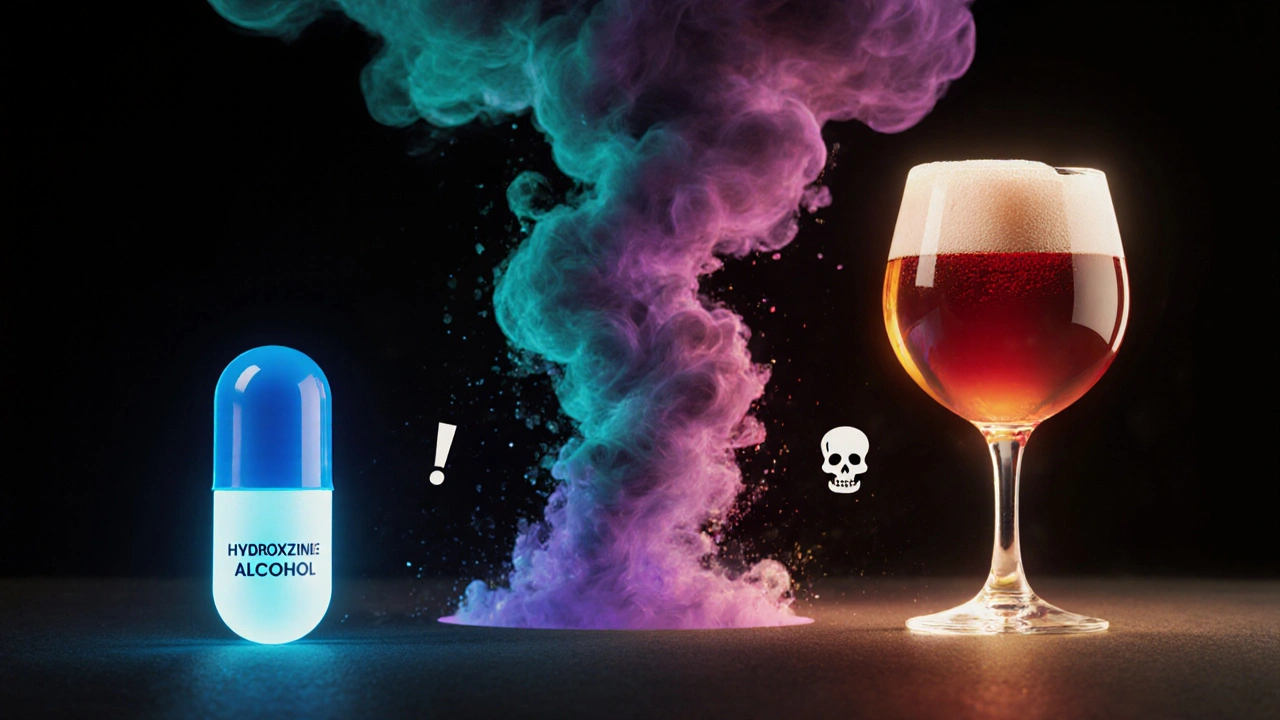Hydroxyzine Alcohol Interaction: Risks, Effects, and Safety Tips
When working with Hydroxyzine, an antihistamine commonly prescribed for anxiety, allergic reactions, and sleep disturbances, many wonder how it behaves with Alcohol, the most widely used depressant beverage worldwide. Also known as Vistaril, it blocks histamine receptors and calms the central nervous system. Mixing it with alcohol can tip the balance toward excessive sedation, dizziness, and even breathing problems. Understanding the hydroxyzine alcohol interaction helps you avoid unpleasant side effects.
Hydroxyzine belongs to a broader group of CNS depressants, substances that slow down brain activity and can cause drowsiness. Both Hydroxyzine and Alcohol act on the same neural pathways, so the combined effect is more than just additive – it multiplies the sedative load. This means a dose of Hydroxyzine that feels mild on its own can become dangerously sleepy when alcohol is added. The interaction can also impair motor coordination, making activities like driving or operating machinery risky.
Practical Tips to Stay Safe
First, treat Hydroxyzine like any other prescription that carries a warning about alcohol. If your doctor prescribes it, ask specifically whether you should avoid drinking. Second, monitor how you feel after the first dose; even a small amount of beer can heighten drowsiness. Third, keep a log of any side effects such as blurred vision, confusion, or shallow breathing, and share it with your healthcare provider. Fourth, remember that other medications—like benzodiazepines, opioids, or antihistamines—can further amplify the depressant effect, so a full medication review is essential.
Beyond the immediate safety concerns, the Hydroxyzine‑Alcohol combo can interfere with treatment goals. For example, if you are using Hydroxyzine to manage anxiety, alcohol may actually worsen anxiety once the sedative wears off, creating a vicious cycle. Likewise, alcohol can raise histamine levels in the body, partially negating Hydroxyzine’s antihistamine action and making allergy symptoms flare up again. Recognizing these feedback loops helps you make smarter choices about when to drink and when to skip a night.
Our collection of articles below dives deeper into related topics—like how other antihistamines interact with alcohol, what to watch for when mixing CNS depressants, and how to spot signs of dangerous sedation. You’ll find clear comparisons, safety checklists, and step‑by‑step guidance that let you stay in control of your medication regimen. Use these resources to build a personalized plan that keeps you safe while you’re on Hydroxyzine.
- October
15
2025 - 5
Hydroxyzine and Alcohol: Why This Mix Is a Hazard
Learn why mixing hydroxyzine with alcohol is risky, recognize danger signs, and get safe alternatives. Follow clear guidelines to protect your health.
Read More